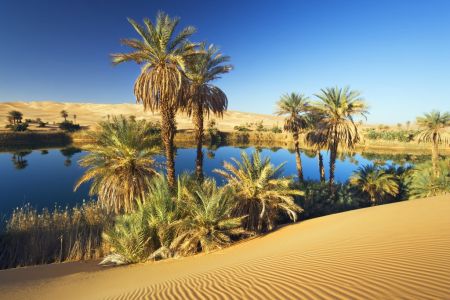17. november: En nyanskaffelse.
En mindre, norsk anskaffelse:
Mathias Sandorf, Vidarforlaget 2008. 496 sider, uillustreret.
Udgivet første gang på norsk 2008, oversat af Bente Christensen.
Man har nok helt glemt, at Andr. Schous bøger solgtes i Norge, men OK.
Kærlig hilsen
Lejf
14. november: En bogklubudgave.
Kære alle
Da jeg for et stykke tid siden lod mig friste til at melde mig ind
i Gyldendals Bogklub (noget jeg ellers ikke gør, da man skal huske at afmelde
bøger hver måned), betød det, at jeg får reklamemateriale fra Gyldendal. I det seneste var der
reklame for "Børnenes Klassikere", som jo ellers er udsendt af
Politiken. Jeg bestilte bogen, og den er identisk med
Politikens udgave - med " Jorden rundt i 80 dage" s. 146
- 194.
1. bogklubudgave 2. oplag. 2016. ISBN 978 87-03-02190-4.
Karton m. kartonryg.
.
.
Betegnelsen angiver, at der må findes en "1.
bogklubudgave 1. oplag".
Det er jo problemet med klubudgaver, at de er svære at holde øje
med.
Hilsen Henrik
9. november: Vernefölgetong.
Hej!
Även i Sverige har "Med underhafståget"
publicerats några gånger - vet inte om vi skrivit om det tidigare på Portalen?
Göteborgs-Posten hade den den 24 december 1895, Nya Dagligt Allehanda den 30
december samma år
(bild!) och Aftonbladet och Göteborgs Handels- och
Sjöfartstidning den 31 december 1895.
Hälsningar!
Lars-Erik
Se masser af eksempler på svenske føljetonner: Føljeton. Sverige
9. november: Nyt om Shara-havet. 
In this week's Maphead, Ken Jennings explores the very real attempts to create a sea in the world's largest hot desert.
Jules Verne was an early pioneer of science fiction, and his final published novel, Invasion of the Sea,
has perhaps the most far-fetched gimmick in his entire body of work: a
European engineer named de Schaller travels to Tunisia with plans to
flood the Sahara, turning the world's largest hot desert
into a vast inland sea. The most surprising part is that Verne didn't
dream up this crazy scheme: the idea of creating a "Sahara Sea" has
been floated by scientists for 140 years, and almost happened as
recently as the 1980s.
The Sahara has been pretty depressed lately.
The
only thing that makes these schemes possible is that vast tracts of the
Sahara Desert are actually below sea level. The El Djouf basin of
Mauritania, the chotts (dry salt lakes) of Tunisia, the Qattara
Depression in northwest Egypt—all are some of Earth's lowest places on
dry land. The bottom of the Qattara Depression is 436 feet below sea
level, making it Africa's second lowest point.
From the people who brought you the Suez Canal…
A
Saharan sea was first proposed in 1877 by the British engineer Donald
McKenzie, who realized that a 400-mile channel from Morocco's Cape Juby
southeast into Mauritania would create an inland sea the size of
Ireland. Ferdinand de Lesseps, the French diplomat who helped build the
Suez Canal and (before America bought him out) the Panama Canal, saw that central Tunisia was a much easier place to flood. His lake would have been smaller, about the size of Massachusetts.
7. november: Lamm nummer 19.
Hej!


.
Den 19:e av 24 Jules Verne-utgåvor från Lamms förlag var
”800 mil på Amazonfloden”. Den kom som nummer fem i serien ”Jules Vernes nyaste
arbeten”, häftad i två delar. Dessutom förstås i klotband, där vi hittills sett
ett blått och ett rött band. Kanske finns det fler färger?
.


.
Hälsningar, Lars-Erik
1. november: Nyt fra Kim, H. G. Wells er på vej!
.
Så blev jeg
færdig med Socialisten/Social-Demokraten frem til 1916, med dette noget pauvre
resultat i f.t. vores fælles interesseområde - de er vist alle kendt på
Portalen i forvejen:
·
Jules Verne: Ved Nordpolen i juledagene (Socialisten
01.01.1873-03.01.1873) Uddrag af Kaptajn Hatteras - i
udklipsføljeton”bog”: For store og små. Søndagslæsning af blandet indhold. (Egentlig
er der tale om to, meget bearbejdede uddrag eller gendigtninger, som dels er hentet fra 1. del, hvor det er -40 grader og kullene
slipper op, dels fra 2. del, hvor man sprænger de fem bjørne i luften.)
Uden forfatterangivelse: Med undervandstoget (Social-Demokraten
15.05.1896) = Michel Verne: An Express of the Future
·
H. Rider Haggard: Jess (Social-Demokraten
03.11.1915-20.01.1916)
Den
fulde listning – ca. 1400 titler – ligger her:
http://www.foljeton.sovemule.dk/doku.php?id=socialdemokraten
Jeg
ser også, at Lejf har fået Havet i Sahara ud, og regner med at Paul
Vernes historie om turen fra Rotterdam til København kommer snart – tillykke
med det! Sidstnævnte fjerner en sten fra mit hjerte, da jeg halvvejs havde
lovet at lave den, men aldrig er kommet videre med det (det skyldes bl.a. at
jeg er blevet optaget af en anden af de store science-fiction-pionerer, H. G.
Wells, som jeg regner med at udsende en 4-5 værker af til januar. (Skamløs
selvpromovering: Klodernes kamp, Dr. Moreaus ø, Gudernes føde, Den usynlige
mand, og (måske først lidt senere) Tidsmaskinen, den er ikke helt
færdigoversat. De første mænd på Månen og en stak noveller kommer senere i
2017.)
Med venlig hilsen
Kim N. Jensen
1.. november: Nyeste fra Haggardsamlingen.
.

.
King Solomon's Mines, Award Essential Classics 2012, 316 sider, fra pæn børnebogsserie. Gave fra Lejf.
.

.
Allan's Wife, Newcastle Publishing Co, 1980.
Indeholder også de små Quatermainhistorier:
Hunter Quatermain's Story, A Tale of three Lions og Long Odds. I alt 240 sider med de originale illustrationer. Med 7 siders indledning af Douglas Menvill.
Allans
hustru er en kortroman om den sørgelige død af hans 2. hustru.
Quatermainromanerne er ofte lidt triste! Den er på dansk udgivet
som
Allans Hustru og
Maiwa Hævn, her
i smukt, komponeret bind fra Brødrene Salmonsen 1890, og den velkendte
Martin udgave med det blå omslag og tegning af "VE" (Vigo Eriksen). På
dårligt krigspapir fra 1944.
1. november: Flere fristelser.
På Købmagergade solgte de
Jorden rundt med 80 retter, 3.
udgave fra 2016 stærkt nedsat til 99 kr! Den nye udgave er meget
smukt udstyret med citater og billeder fra Vernes værk. 285 sider med
masser af fine opskrifter. Skrevet af David Loftus med opskrifter af
Jamie Oliver. Anbefales på grund af den sympatiske pris. Forlaget
Legind.
.
1. november: Fristelser her hvor julen nærmer sig.
Kære alle.
Så lod jeg mig friste til at købe 2. udg. af Jorden rundt med
Ingpens tegninger.
Data om bogen:
Jules Verne "Jorden rundt på firs dage", Carlsen 2.
udgave 1. oplag 2016.
Serien: Ingpen Illustrerede Klassikere.
På dansk ved Jan Madsen. Illustrationer af Robert Ingpen. 224 s.
ISBN 13:9788711566473
Helshirtingsindbinding med påtrykt illustration på forsiden. (Uden
omslag).
Forskellen fra 1. udgaven er indbindingen og typografien på
forsiden, samt at den er 100 kr. billigere end førsteudgaven.
Bedste hilsner Henrik
28. oktober: Nyt fra Lejf og Det Poetiske Bureaus Forlag.
Så er den første anmeldelse af Havet i Sahara kommet på God-Bog.dk. Her skriver Ib Ahnfeldt bl.a.:
Dette
Jules Vernes sidste værk er aldrig før blevet oversat til dansk. Men
selv om det ikke er blevet oversat, fortjener det nu engang at blive
det. Det er ikke helt så rigt på fantasi, som nogle af Jules Vernes
andre bøger, men der er fantastisk handling nok til at tilfredsstille
læseren.... Det er jo Jules Verne, så mon ikke ... det hele ender med en uventet grand finale. Bogen er let læst,
siderne er små og teksten flydende, det har været en fornøjelse at læse
denne bog.
.

.
Og endnu mere er på vej! Lejf skriver:
Nu er den næste bog, dog en ganske lille én, afleveret til Forlagets videre
foranstaltning. Hermed opfylder jeg et gammelt ønske fra Jer om at "Fra
Rotterdam til København" bliver tilgængelig på dansk. Jeg har forsynet den
med et forord, der omtaler 1861-besøget og et efterord med et par reportager
fra 1881-rejsen. Udgivelsestidspunktet kender jeg ikke endnu.
Kærlig hilsen Lejf
25. oktober: Nya bibliografier!
Fra Lars-Erik:
Två nya bibliografier är nu klara. Bägge är
supplement till tidigare bibliografier.
.
.
Romanförlag & Romanblad. Supplement till en något
spretig bibliografi.
88 sidor. Rikligt illustrerad, huvudsakligen i färg. Pris 140 kr.
Innehåller dels kompletteringar och tillägg till den ursprungliga bibliografin,
dels tillägg av helt nya följetongstidskrifter. Upphovsmännen till förlagen
Andersson & Co samt Nordiska Konstförlaget har upptäckts! Uppgifter om och
innehåll i följetongsblad från 1876 till 1960 redovisas, t ex Novellbibliothek,
Romanbibliothek med Illustrationer, Femöringen, Kring Aftonlampan, Humoristiskt
kaleidoskop, Hemmets solstrålar, Fantasi och verklighet…
Följetonger i några svenska dagstidningar. Supplement.
181 sidor. Illustrerad, delvis i färg. Pris 195 kr.
Innehåller dels rättelser och tillägg till de följetongsförteckningar som
publicerats i följetongsboken, dels tillägg av fler tidningar och fortsättning
längre fram i tiden för tidningar som avslutades omkring 1920 i
följetongsboken. Bland annat ingår Brokiga Blad, Tidningen Carlshamn, Dagens
Nyheter 1943-1985, Lunds Dagblad, Stockholms-Tidningen 1889-1904, 1912-1965,
SDS 1922-1969, UNT 1899-1920, Östgöta-Correspondenten 1800-1920.
I lager finns fortfarande:
Romanförlag och Romanblad. En något spretig bibliografi.
Data om och utgivning av Carl Anderssons Bokförlag, Andersson & Co,
Nordiska Konstförlaget och data om och innehåll i ett antal Romanblad. 76
sidor. Illustrerad, mest i färg. Pris 250 kr.
Edgar Allan Poe. Hemlighetsfulla och fantastiska historier på svenska
1860-1997.
En bibliografi. 134 sidor. Sparsamt illustrerad i svartvitt. Pris 80 kr.
Porto tillkommer. Övriga bibliografier är slutsålda. Nordisk Förlaget, nya
upplagan från 2015, kan tryckas om ifall tillräckligt stort intresse anmäles.
Beställes hos:
Lars-Erik
Nygren
Kom ihåg att ange din adress!
Tågvirkesgatan
2
0703-498079
232 35
Arlöv
lars-erik.nygren@comhem.se
24. oktober: to måneder til jul!
Hej!"Jorden runt på 80 dagar" gavs ut av
Data-Repro AB i Göteborg 1971.
Den anges vara översatt och bearbetad av Henrik Wranér,
illustrationer av Edvard Forsström. 224 sidor, häftad i A4-format. Man hade
tagit Saga:s gamla version och tryckt upp i lättläst version. Här
är en omslagsbild, det har vi nog inte sett förut här på Portalen!
Hilsen,
Lars-Erik
21. oktober: ZEBU-teatret.
.
Kære alle
Om "Jorden rundt i 80 dage" teaterforestillingen på ZEBU
teatret har jeg nedskrevet følgende oplysninger (som nok dublerer Nils´
oplysninger i nogen grad):
Titel: "Jorden rundt i 80 dage - utrolig frit efter Jules
Verne"
Instruktør og manus: Mia Lipschitz.
Medvirkende: Peter Holst og Jeanette Lindbæk Birk.
Forestillingen varer 1 t. 10 min.
Opført på Grønegadeteatret i Næstved 19/9 - 4/10 2016.

.
Gæstespil på ZEBU teatret, Øresundsvej 4, 2300 København S. 5/10 -
12/10 2016.
Jeg har scannet reklame for teaterforestillinger, hvor jeg
opdagede forestillingen, program og plakaten i 2 halvdele.
Bedste hilsner Henrik
. Denne forestilling er en nutidig dramatisering og gendigtning af Jules Vernes klassiker ”Jorden Rundt i 80 Dage”.
Da
den unge omflakkende kvinde, Passepartout, får arbejde som personlig
assistent hos den ensomme rigmand Phileas Fogg, tror hun, at hun har
sikret sig en tryg og stabil tilværelse.
Men Fogg har sat sig for at bevise, at verden med moderne teknologi er blevet så lille, at den kan overvindes i et snuptag.
Han lægger derfor sit trygge liv bag sig og tager Passepartout med ud
på en rejse i, hvad der viser sig at være en helt ukendt verden. En
verden præget af overvågning. En verden der giver uforudsete
forhindringer, men også en verden der rummer et møde med kærligheden
som ingen af dem havde set komme…
Varighed
60 minutter

Turnerer i perioden 19. september-13. oktober 2016. Spiller bl.a.
19. september-4. oktober på Grønnegade Teater og 5.-12. oktober på ZeBU
20. oktober: En anden sol.
Hej, er I opmærksomme på følgende bog af Ib Michael: En anden sol ?
.
Ib
Michael erklærer sig i stor gæld til Jules Verne og viser det bl.a. ved
at udstyre denne roman med illustrationerne fra den første udgave af
'En verdensomsejling under havet'. Fortælleren, Alexander, en
naturvidenskabsmand, der er gået lidt i frø, finder uventet ud af, at
han er søn af en russisk indvandrer og ud af en slægt med en usædvanlig
naturvidenskabelig begavelse. Men også med en hel del penge, så en arv
sender ham af sted på et togt, der bl.a. giver ham en verdensomsejling
under havet i selskab med nogle måske tvekønnede, sexede skabninger,
der kommunikerer med telepati. Det er en drengebog, og det er en
eventyrhistorie, der går over stok og sten, spænding, fantasy og
naturvidenskab i en skøn blanding. Om den ender godt? Tja…
Historien
er en slags selvstændig fortsættelse af 'Himlen brændte', og den tager
sit udgangspunkt i et meteornedslag, eller hvad det nu var, der lagde
store områder øde i Sibirien i 1908. Vores helt og fortæller i denne
historie, Alexander, en deprimeret, rastløs og ubeskæftiget akademiker,
finder som 41-årig ud af, at hans biologiske far var den charmerende
russiske bager på Strandvejen. Men også at hans slægt kunne noget med
fysik, bl.a. atomfysikeren Irina, som vi fulgte i 'Himlen brændte'.
Alexanders russiske arv giver ham mulighed for at tage til det Thailand
og den lille hytte i vandkanten, hvor vi læsere altid har hørt, at Ib
Michael tilbringer sine vintre. Her møder Alexander mange skæve
eksistenser, en af de særeste er den japanske dykkerpige Ichi, som han
falder pladask for.
Hertil
var jeg tæt på at tænke: Murakami! Alt beskrives lakonisk og det
fantastiske aldeles ubesværet. Men så rykker Jules Verne lidt efter
lidt ind på scenen. Alexander bliver bogstaveligt talt fisket ud af en
tropisk storm af Ichi og finder sig pludselig ombord på et
undervandsfartøj nærmest under kommando af Kaptajn Nemo og med en slags
Noahs Ark. Fantasyelementerne bragte mig fluks tilbage til mine unge
dages mange oplevelser med denne genre.
Forfatterens
tætte tilknytning til havet og samhørighed med dets skabninger læser
man i hver eneste linje i beskrivelserne, kommunikationen med den store
blæksprutte er tæt på rørende. Her oplever jeg 100 procent ægthed,
kærlighedssekvenserne derimod hører mere hjemme i drengebogen. Men det
gør da ikke noget. Jeg følte mig rigtig godt underholdt, historien er
spændende, fantasyelementerne fungerer fint. Jeg måtte til sidst
erkende, at jeg heldigvis ikke er blevet for gammel til den genre. (Det
er forfatteren heller ikke, han er gået hen og blevet 70, men han har
jo også været i mit litterære landskab "altid") Skøn læseoplevelse.
(fra Litteratursiden.dk)
19. oktober: Lidt fra gemmerne.
Hej!
Ja, jeg er stadig i færd med at
rydde op i kulturelt guld.
Faldt lige over pulps fra 1931
med titel Argosy.
Argosy betyder noget i retning af
handelsskib med rig last.
Disse "Handelsskibe" kommer
rundt i alle genrer: Eventyr, fantasy, science fiction, pirat & cowboy og
hvad der ellers kan være.
Jeg vedhæfter lige eksemplar hvor
vi igen har Tarzan inspiration. Otis Adelbert Kline og hans skriverier er
tidligere omtalt. Robert A. Graef har tegnet forsiden til Jan fra junglen.
.
Og så lidt kineserier igen med
forsider af Paul Stahr. Sax Rohmer fik virkelig sat gang i den gule fare da han
introducerede Fu Manchu & Co.
Inde i magasinerne har vi
illustrationer til de forskellige historier.
Kvaliteten på disse pulps er også
tidligere omtalt. Og med kvalitet mener jeg stand af magasinet. De var jo
tydeligvis massefabrikeret og uden tanke på bevaring. Men disse
pulps endte jo op med at blive cult og samlerobjekter. Forsiderne var
jo nogle der råbte "KØB MIG!" og blev til sidst for meget for
censuren. Om det var fornuftigt skal jeg ikke gå ind i. Spiritusforbud førte jo
heller ikke til noget godt. Og virkelighedens begivenheder overgår vel også
mange gange fiktionen. Mennesket er nu engang en destruktiv race.
Så slutter jeg for i dag.
Mvh Per
.
16. oktober: 7. og sidste omgang franske nyanskaffelser
.
1) Face au Drapeau, Hetzel, ukendt årstal.Specielt indbundet til brug som
flidspræmie i parisiske skoler. Indeholder enkelte kromotypografier, men er i
øvrigt med mange brugsspor.
.

.
.

.
.
Kærlig hilsen
Lejf
16. oktober: Ny Verne oversat til dansk!
.
Ved en fin reception på forlaget Det Poetiske Bureaus Forlag i Møllegade blev Lejfs tredje nyoversatte Jules Verneroman fejret i dag.
Det drejer sig om romanen L'invasion de la mer, der hermed foreligger for første gang på et skandinavisk sprog.
Havet i Sahara, oversat
fra fransk af Lejf Rasmussen, uforkortet med alle Benetts
illustrationer. 321 sider med 5 siders forord af oversætteren. ISBN:
978-87-93347-45-8. Pris på forlaget kun 125 kr.
.

15. oktober: 6. del af de franske anskaffelser:
1) Les Naufrages du Jonathan, Hachette 1922.Endnu ingen dansk oversættelse.
.

.
.
Kærlig hilsen
Lejf
14. oktober: Nogle franske anskaffelser 5:
.
Michel Strogoff i
Hachettes hæfter med firkanten på forsiden. 2 bind fra 1936.
.


.
Netop i 1936 havde en fransk indspilning af Michel Strogoff med tidens kendte
skuespillere premiere. Inde i et af hæfterne lå vedhæftede avisudklip. Jeg har
også vedhæftet filmens plakat.
.
Kærlig hilsen
Lejf
13. oktober: Flere franske anskaffelser 4:
.
1) Le Phare du Bout du Monde,
Bibliothèque Verte, Hachette 1951.Illustrationer af A. Galland.
.

.
.
Kærlig
hilsen
Lejf
12. oktober: Flere franske anskaffelser 3.
1) Les Integrales ... Les tribulations d'un chinois en chine og Famille
Sans-Nom, Hachette 1983.
.

.
.

.
.
Kærlig hilsen
Lejf
11. oktober: Flere franske anskaffelser.
.
1) En fransksproget belgisk børnebog: Michel Strogoff d'apres Jules Verne på
blot 57 sider, hvoraf en stor del billeder. Forlaget S.I.R.E.C., intet årstal,
men jeg gætter på 50'erne.
.

.
.
Kærlig hilsen et à bientôt
Lejf
10. oktober: Tilbage på plads!
Efter
en forlænget week-end i Berlin ligger der masser af post, herunder
Jules Verne-guf fra flere lande. Vi tager et land ad gangen:
Fra Tyskland.
Fra den tyske Jules-Verne-Club er ankommet nummer 29 af deres Magazin Nautilus. Igen et pragtnummer på 48 sider, der fejrer 150 året for udgivelsen af Kaptajn Hatteras med
artikel om JVs fyrtårne, tegneserier og meget andet, Som det er blevet
sædvane er forsendelsen forsynet med et "frimærke", der fejrer den
runde fødselsdag. Pris kun 5 euro.

.
.
.
.

.


Se andre eksempler på Jules Verne-restauranter rundt omkring: Spisesteder
En
enkelt hjembragt bog i den glimrende dtv-serie med et særdeles
udførligt baggrundsmateriale på over 100 sider ved Volker Dehs.
6. oplag fra 2016, 424 sider med alle de oprindelige illustrationer.
.

.
Fra Frankrig: nogle franske nyanskaffelser.
1) Jean -Paul Dekiss: Jules Verne à Amiens, Èditions Belin 2014.
Jules Verne optræder som fortæller i en guided tur i huset i Amiens. Der er en
del sort-hvide fotos i bogen.
.

.
2) Michel Strogoff, 2 bind. EDL september 2005. Endnu en tro kopi af Hetzels
bind.
.

.
3) Voyage au centre de la Terre. ELCY Èditions 2015. Disse kopier fortsætter
tilsyneladende med at udkomme.
.
Kærlig hilsen
Lejf
Fra Sverige: Följeton.
Hej!
Ännu en Verne-följetong i en svensk tidning! Mathias Sandorf
trycktes som spaltföljetong i dagstidningen Figaro från den 22 juni
till den 16 oktober 1885 i 163 avsnitt. Översättare okänd, men det är
inte samma översättning som när boken gavs ut av Lamms förlag - 1888!
Så Figaro var först!
.
Hälsningar!
Lars-Erik
Fra Danmark: En ny dansk udgave af Jorden rundt.
Carlsen udgiver en ny
udgave af "Jorden rundt på firs dage" (Anden indbinding)
Serie: Ingpen
Illustrerede klassikere
Forlag: Carlsen, Udgave:
2, Isbn 13: 9788711566473
Billedet er identisk med
2011 udgaven, men indbindingen er åbenbart anderledes.
Der er forskellige
udgivelsestidspunkter i de forskellige boghandler, men bogen er på gaden nu til
199,95 kr., bl.a. hos Bog&idé.
.
.
Selv om jeg er glad for
varianter, tror jeg nok, at forskellen skal opleves live i en butik.
Ellers er der ikke meget
Jules Verne aktivitet her på Fyn i øjeblikket.
Mange hilsener Nils
Bjørn: Jeg så præcis samme udgave på tysk i Berlin.
1. oktober: Lamm nr 18 – De geografiska upptäckternas historia
Hej!
1879 började Lamms förlag ge ut Vernes bok om de
geografiska upptäckternas historia. Utgivningen omfattade tre delar, vanligen
anges åren 1880-1884. Åtminstone de
bägge första delarna gavs ut i häften.
Första delen omfattade sju häften, fast häfte 3-4 gavs ut
i ett, och 5-7 i ett. Omslagen till de fyra första häftena är tryckta 1879.
Eftersom titelblad och innehållsförteckning följde med det sista häftet står
det 1880 som tryckår på kolofonen. På bakre omslaget till häfte 3-4 görs reklam
för den nyligen utkomna ”Begums miljoner”, som ju trycktes 1879.
.


.
Andra delen gavs också ut i sju häften 1880. Priset per
del i häften var 7 kronor. Först i häfte 3-4 gör man reklam för ”Ånghuset”,
tryckt 1880 – på bakre omslaget till ”Ånghusets” första del anges att man då
gett ut första bandet och första häftet till andra bandet.
Även tredje delen 1884 kom ut i häften. Märkligt nog har
tredje delen (felaktigt) samma titel som del 2 – den innehåller ju det nittonde
århundradets stora sjöfarare.
.
Alla delarna gavs också ut inbundna i klotband av samma
slag som de flesta övriga av Lamms verk. De finns i åtskilliga färger: röda,
ljusbruna, mörkbruna, blåa och gröna – fem färgvarianter har vi väl sett?
Priset var 14 kr per band.
.
.
Betydligt senare, 1902, gavs första delen ut på svenska
igen – men i USA. Det berättade vi om för ett tag sen.
Hälsningar!
Lars-Erik.
Lars-Eriks grundige gennemgang af de 24 Jules Verneudgivelser fra O. Lamm nærmer sig sin afslutning.
Se det hele: O. Lamms Förlag 1 - 24
27. september: Endnu en Haggard.
Til samlingen er indgået en version af romanen The Spirit of Bambatse fra 1906. Det er den samme roman, der i England blev udsendt som Benita, an African Adventure, men i USA bevarede Haggards egen titel, opkaldt efter ånden på toppen af et bjerg, der til forveksling ligner den kække ungmø Benita.
329
sider fra Newcastle Publishing CO. fra 1979. Bogen ineholder 8 af
førsteudgavens 16 illustrationer af Gordon Browne samt en 6 siders
introduktion ved Alvin F. Germeshausen.
Her vist sammen med en gammel billigbogsudgave fra 1952 fra Chariot Books.
så har vi nogenlunde historien på plads.
24. september: mere Per om bl.a. Drago
.
Hogarth tegnede jo også Drago.
Drago var jo også noget der kom i amerikanske søndags avissider og som
han skabte efter at han forlod Tarzan serien for første
gang. Blev herhjemme bragt i Serie Bladet
der udkom 1948 - 1952 så vidt huskes. Selv om Tarzan her har tøj på for
det meste og befinder sig i Argentina, så har han de samme
kvaliteter. Her bekæmper han Nazi slyngel der drømmer om
verdensherredømme.
.

Læs hele dagens Per om Tarzan, Korak og Drago: Pers sider om bla Tarzan og søn og Draco
.
24. september: Vernefølgeton mm.
Hej!
BonnierCarlsen gav 2004 ut en bok, ”Berömda klassiker”, som bland annat innehåller Vernes ”Jorden runt på 80 dagar”.
Övriga är Robin Hood, Skattkammarlön och Robinson Crusoe. 111 sidor ska
Vernes del av boken vara på. Översättare Love Kellberg. ISBN 91-638-3974-1. Mer data har jag inte!
.

.
Hälsningar!
Lars-Erik
15. september: Nogle hollandske anskaffelser.
Kære alle
Fra min hollandske forbindelse har jeg modtaget
nogle supplementer til samlingen:
1. "20.000 Mijlen onder Zee - Westerlijk
Halfrond", Elsevier 1909.
..

.
Serien "Folkeudgave
1907-15" bind 9. U. ill. 104 s.
Privat halvshirtingbind med
originalt farvelitografi påklæbet forsiden.
(Bibliografi s. 70 billede
nr. 111)
2. "De Reis om de Wereld in 80
dagen"lsevier 1919.
Serien "Sidste
folkeudgave ca. 1922" bind 1. U. ill. 106 s.
Blåt helshirtingbind med
påklæbet illustration. (Illustrationen er fra Kaptajn Grants børn)
(Bibliografi s. 74 billede af
typen nr. 127)
3. "Het Stoomhuis - De Waanzinnige der
Neruda" + "Dokter Ox", Elsevier 1920.
Seien "12 nye bøger i
folkeudgave" bind 20. U. ill. 110 s.
Blåt helshirtingsbind med
påklæbet farveillustration.
(Bibliografi s. 73 billede
nr. 123).
.


.
Den første er en tilføjelse til samlingen med de
smukke farvelitografier, og de 2 sidste er eksempler på de indbundne
folkeudgaver, som er mere sjældne end de heftede.
Bedste hilsner
Henrik










































































